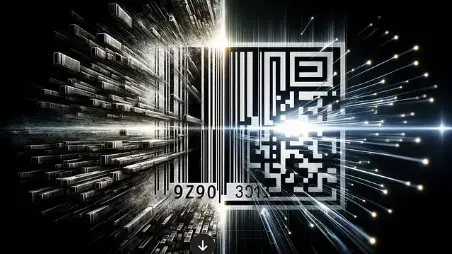Sandbox
The Evolution of Barcodes: From Simple Stripes to AI-Enabled Blockchain

Did you know that the barcode, a staple in retail operations, recently marked its 50th anniversary? Initially designed to simplify grocery checkout processes, barcodes have evolved significantly, now playing a pivotal role in the efficiency of modern inventory management and supply chains.
The Journey of the Barcode: A Retail Revolution
The invention of the barcode traces back to 1949 when Joseph Woodland, inspired by Morse code, sketched the first design on Miami Beach. Though it began as a simple concept, the barcode faced numerous challenges and iterations before becoming the global standard known today as the Universal Product Code (UPC) in the 1970s.
The Shift from 1D to 2D Barcodes
Despite the utility of 1D barcodes like the UPC, their limited data capacity has become a constraint in our data-intensive era. This limitation has spurred a shift towards 2D barcodes such as QR codes and DataMatrix. These advanced barcodes can store extensive data — from URLs to detailed product information — making them crucial for sophisticated inventory management and enhanced recall capabilities.
Driving Adoption through Initiatives and Compliance
Initiatives such as GS1 Sunrise 2027 are spearheading the push towards 2D barcodes, focusing on improving inventory management and recall readiness. Regulations like FSMA 204 also underscore the need for these data-rich barcodes in sectors like food safety, where swift and precise product tracing is imperative.
Introducing GearChain: Barcode Integration with Blockchain for Optimal Security and Efficiency
GearChain, our cutting-edge solution, marries barcode technology with blockchain, enhancing security, decentralization, and scalability in supply chain management. GearChain’s blockchain architecture can handle 10,000 transactions per second with almost zero network fees, recording every scan of a 2D barcode on a tamper-proof, permissionless public ledger — ideal for record-keeping without the need for complex tokenomics.
Leveraging Generative AI for Enhanced Supply Chain Insights
GearChain doesn’t just track; it learns. By applying generative AI, GearChain analyzes historical data from barcode scans to identify trends and enable proactive decision-making. This transformation turns passive data into a strategic resource, propelling businesses towards more informed and effective operations.
Real-World Applications and Future-Proof Asset Management
GearChain enables precise tracking of high-value and time-sensitive assets — from luxury goods to aerospace components and perishable foods — across the entire supply chain. This technology ensures compliance and safety while facilitating just-in-time delivery, thus optimizing the last mile of supply chain management. Additionally, GearChain’s utility tokens allow for the tokenization of real-world assets and using inventory as collateral.
Summary
From its origins as a simple set of stripes to its integration with groundbreaking technologies like AI and blockchain through GearChain, the barcode has revolutionized interaction with the physical world. As we look forward, GearChain will continue to drive the digital transformation of supply chains, pushing the boundaries of efficiency, security, and transparency.

